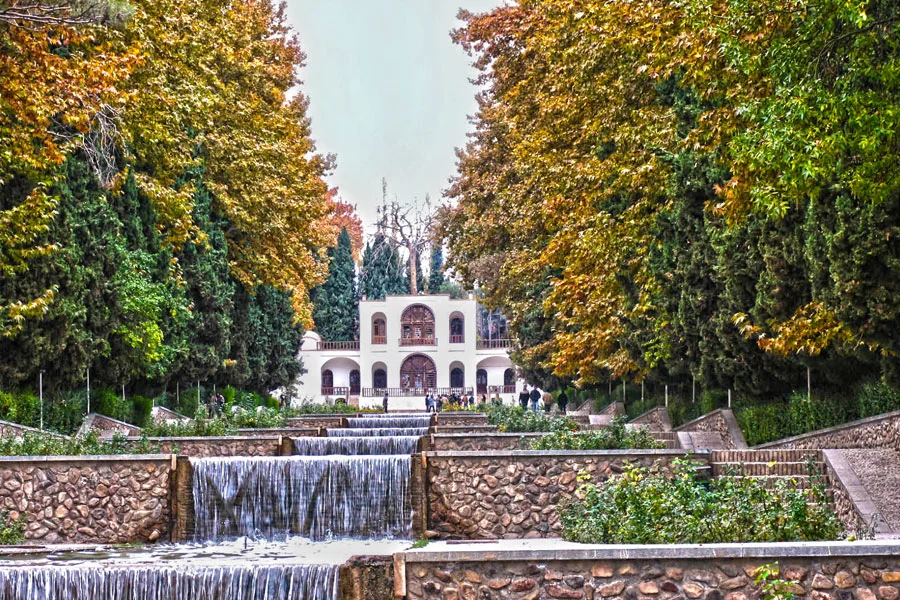
Kerman City Guide
Kerman, located in southeastern Iran, is the capital of Kerman Province, the largest in the country. With a history spanning thousands of years, Kerman boasts a rich cultural heritage. Once the capital of various Iranian dynasties, this historic city offers a deep connection to Iran’s past and traditions.
History of Kerman
Kerman’s history stretches back to the Achaemenid period (6th to 4th centuries BCE), when it was known as Carmania. During the Sassanid era (3rd to 7th centuries CE), the city became a key center and served as the capital of Kerman Province.
Following the Arab conquest of Iran in the 7th century, Kerman emerged as an important hub for Islamic learning and culture. The city became home to many scholars and poets, including the renowned Sufi mystic Shah Nematollah Vali.
Kerman faced destruction by the Mongols in the 13th century but was quickly rebuilt and continued to prosper. During the Safavid (16th to 18th centuries) and Qajar (18th to 20th centuries) periods, it became a thriving center for trade and commerce.
Today, Kerman is a lively city with more than 1.2 million people. It’s an important commercial and industrial hub, known for its crafts, carpets, and textiles.
Kerman is uniquely positioned at the crossroads of mountains and desert, giving it a diverse climate. Travelers should know that Kerman is one of the few cities in Iran with two distinct weather patterns in a single season. The northern, northwestern, and central parts of the city have a dry, moderate climate that gets cold in winter. In contrast, the central, southern, and southeastern areas experience a hot, dry climate. The city’s geography extends from the mountains in the north and northwest to the plains and desert in the south and southeast.
Kerman’s diverse climate has drawn many travelers. For example, the city center is warmer than the northwestern areas. Situated about 1,754 meters above sea level, Kerman benefits from the nearby mountains, giving it a cooler, more moderate climate compared to cities like Yazd and Isfahan. The air quality in Kerman is excellent, with minimal pollution. In summer, while the days can be hot, the nights remain pleasantly cool.
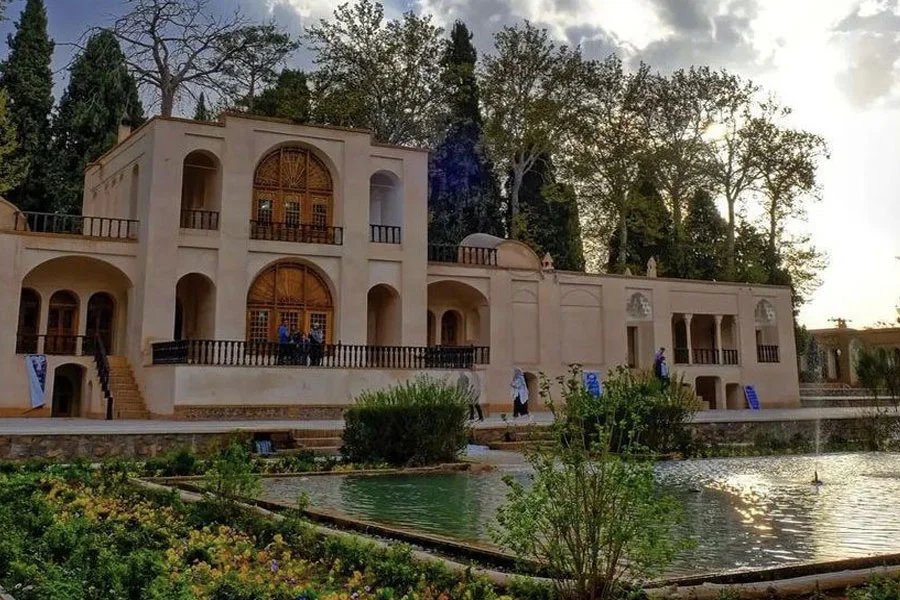
The ideal time to visit Kerman
The best time to visit Kerman is during spring, especially in Farvardin (around March 21 to April 20) and Ordibehesht (around April 21 to May 21). In Farvardin, temperatures average around 18°C, making these months the most pleasant and ideal for exploring the city.
If you want to explore the natural beauty of the Shahdad and Lut deserts, the best times to visit are during Mehr (approximately September 23 to October 22) and Aban (approximately October 23 to November 21). Winter is also a good time to visit Shahdad. Be sure to leave the desert a few hours before sunset to avoid the risks of darkness and sandstorms. Summer is less ideal for visiting Kerman due to the high temperatures. However, if you prefer to explore the upland areas or enjoy pleasant villages like Bahramjerd, Seh Konj, or the Fosk waterfall, summer can be a great option.
Discover Kerman’s Local Cuisine
Exploring Kerman’s local cuisine is a delightful way to experience the region’s unique flavors and support the local economy.
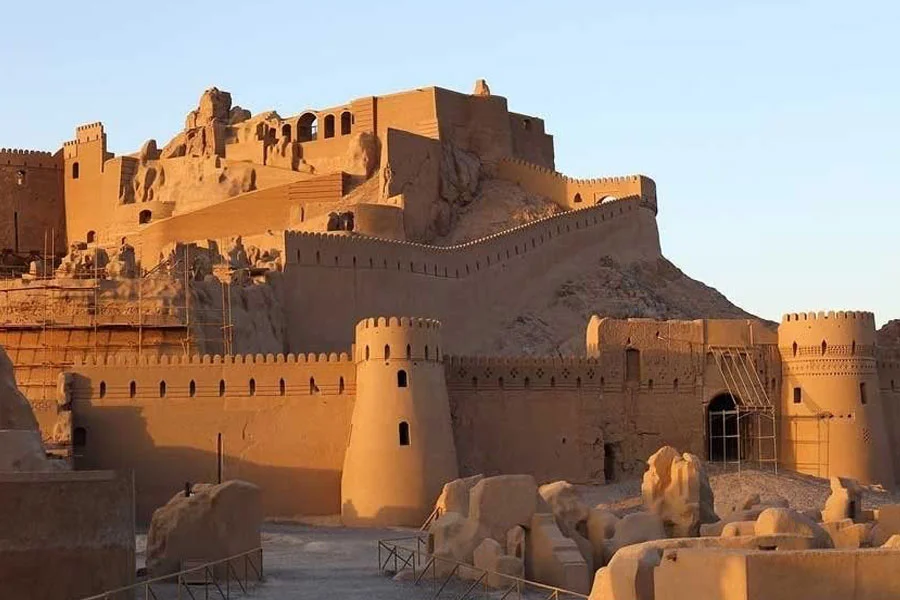
Key Information About Kerman
Before you travel, it’s a good idea to save some important contact numbers on your phone. This way, you can easily reach relevant organizations or authorities if needed. For Kerman, remember the city’s telephone area code is 034. When calling major hotels or restaurants, use this code as a prefix. Additionally, the number for the Red Crescent Society (similar to the Red Cross) in Kerman is 03432615202. Keep this number handy for emergencies, especially during outdoor excursions.
When planning your trip to Kerman, it’s important to consider the travel distance and time. Kerman is about 998 kilometers from Tehran. If you’re driving, expect the journey to take around 14 hours. For a quicker option, flights take about one hour and thirty minutes, and Ayatollah Rafsanjani Airport is roughly twenty minutes from the city center. If you choose to drive from Tehran, plan for a travel time of approximately 14 to 15 hours.
Getting to Kerman: Travel Options
Travelers often ask about the best ways to get to Kerman. You can choose from several options: driving, taking a train, riding a bus, or flying. The journey by car, train, or bus from Tehran to Kerman usually takes around 14 hours, which can be quite lengthy. Many travelers prefer flying to save time, although it is generally the most expensive option. For a budget-friendly choice, buses are the most economical way to travel to Kerman.
Traveling to Kerman by Train
Taking the train to Kerman is a great choice, especially for family trips. It offers the chance to enjoy scenic views, relax in a train compartment, and save money compared to flying. During peak travel seasons, many people opt for the train. If you plan to visit Kerman in Farvardin (the first month of the Persian calendar, roughly March/April), it’s a good idea to book your train tickets at least a month in advance.
Farvardin is a peak travel season for Kerman, drawing many visitors. The train journey from Tehran to Kerman takes about 14 hours. You can choose from first, second, or third-class trains. There are also “Ghazal” trains, which are first-class and more expensive than the second and third-class options.
Flying to Kerman
If you want to save time on your trip, flying is your best option. Several airlines offer flights to Kerman. You can check flight schedules and ticket prices on the OrientTrips website. For the best deals, consider booking last-minute flights. The flight from Tehran to Kerman takes about one hour and thirty minutes, making it the quickest way to reach the city. Flights are available daily with no limitations, which is why many travelers choose air travel.

Hotels in Kerman
Explore our guide to the top hotels in Kerman, featuring options that blend comfort and style. Whether you’re interested in historic sites or luxury accommodations, our selection has the ideal stay for every traveler.
Pars Hotel, Kerman
Pars Hotel Kerman, a modern five-star establishment, has been serving guests since 2002. With eight floors and 197 rooms, this hotel offers a range of special amenities to ensure a comfortable and enjoyable stay.
Conveniently situated, the hotel provides easy access to the airport, train station, city center, and local attractions. Guests can enjoy a variety of amenities, including delightful restaurants, a gym, a coffee shop, a water complex, a garden, green spaces, and a conference hall with live music.
Tourist Hotel in Kerman
Opened in 1975 and renovated in 2019, Kerman Tourist Hotel is a modern four-star property designed for guest comfort. Located close to Kerman’s main attractions, such as the Grand Mosque, traditional bazaar, Ganjali Khan bathhouse, caravanserai, medical university, Harandi Garden Museum, Moayedi Ice House, and the aquarium museum, It provides an excellent starting point for discovering the city’s wonders. The hotel features a traditional tea house, several restaurants with both Iranian and international dishes, a coffee shop, room service, parking, in-room safes, internet, taxi service and green spaces.
Hezar Hotel in Kerman
Hezar Hotel Kerman is a three-star hotel, established in 1994 and renovated in 2015 to refresh its quality and appearance. With five floors and 42 rooms, it offers various options to suit different preferences and budgets. Centrally located, the hotel provides easy access to commercial centers, offices, and local attractions. Amenities include a coffee shop, parking, room service, a restaurant, an internet café, a minibar, housekeeping, a massage room, a gym, a luggage room, and green spaces.
Shahbaz Hotel in Kerman
Established in 2019, Shahbaz Traditional Hotel Kerman is one of the top traditional accommodations in the city, housed in a historic Qajar-era building. Its charming atmosphere provides a delightful stay, with easy access to Kerman’s landmarks such as the Ganjali Khan Bathhouse, the grand bazaar, Harandi Garden, and Vakil Caravanserai. The hotel offers convenient amenities including parking, a restaurant, a traditional tea house, taxi service, a coffee shop, and 24-hour reception.
Shah Vali Traditional Hotel, Mahan
Shah Vali Traditional Hotel is located in a historic Qajar-era house in the Mahan area, 38 kilometers southeast of Kerman. The building has been renovated several times, including a 2018 update, enhancing its facilities and services. The hotel now offers 15 rooms and suites with unique décor and a traditional atmosphere, combined with modern amenities for a comfortable stay.

What to Buy as Souvenirs from Kerman
Visitors often ask, “What souvenirs can we bring back from Kerman?” The city offers a wide variety of unique and memorable items to choose from.
Some of the top souvenirs from Kerman are its delicious local foods, including:
Qavootu: A sweet blend of ground nuts and spices
Kolompeh: A pastry filled with dates and walnuts
Pistachios
Zireh: Cumin seeds
Dates
Distinctive Handicrafts from Kerman
Another notable category of souvenirs from Kerman is the city’s unique handicrafts, which include:
Pateh: Traditional Persian embroidery
Shiriki-Pich: A distinctive type of rug
Kermani Rugs
Gabbeh Dozi: Rug embroidery
Ajideh Dozi: Another form of embroidery
Copperware
Where to Shop in Kerman
If you’re visiting Kerman and asking, “Where should I shop?
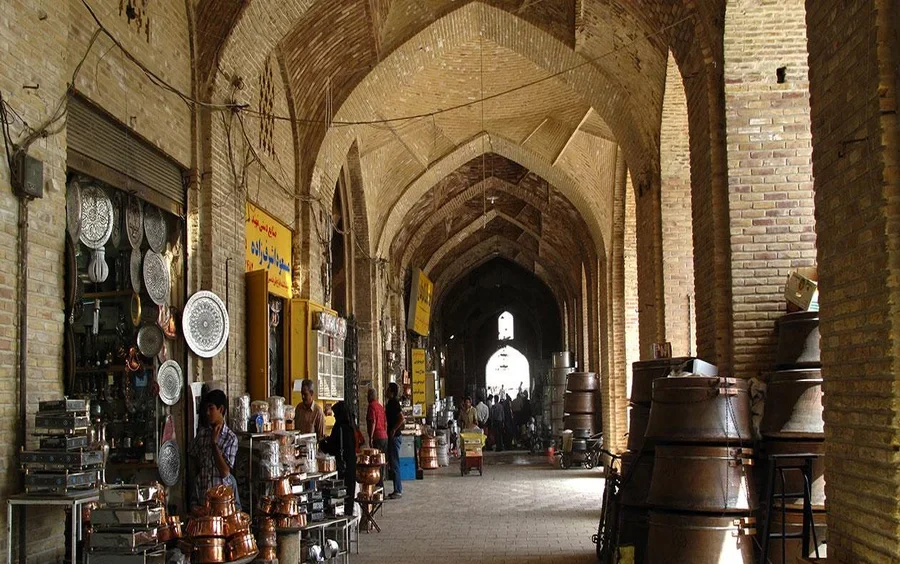
Ganjali Khan Bazaar
Ganjali Khan Bazaar is a top shopping destination in Kerman. It’s the perfect place to find traditional handicrafts like Pateh, Gilim rugs, copperware, and Ajideh Dozi embroidery. You can also purchase high-quality pistachios, Qavoot in different
flavors, and fresh dates.
Top Attractions in Kerman
Ganjalikhan Complex
The Ganjalikhan Complex, dating back to the Safavid era, is located in the historic center of Kerman. Built between 1596 and 1621 under Governor Ganjalikhan, it includes a square, a school, a caravanserai, a bathhouse, a mint, a mosque, and a bazaar. The complex spans 11,000 square meters and features a large public square (99 by 54 meters) aligned with the east-west Vakil Bazaar to its south. Surrounding the square are bazaar arcades to the north, south, and west, while the Ganjalikhan caravanserai stands to the east. The Ganjalikhan bathhouse is located along Vakil Bazaar, south of the square, in the Ganjalikhan Bazaar area.
Shazdeh Garden
Shazdeh Garden, or “Prince’s Garden,” is a historic Persian oasis nestled in the scenic countryside of Mahan, Kerman province. Originally established in 1850 for Mohammad Hassan Khan Qajar Sardari Iravani, the garden was expanded and developed by Abdolhamid Mirza Naseroddoleh in 1870, during the Qajar era. Strategically situated on the route between Bam Citadel and Kerman, the garden spans 5.5 hectares and is roughly 407 meters long and 122 meters wide, enclosed by walls and surrounded by desert. It features an entrance and gate at the lower end and a two-story residential building at the upper end, with a row of water fountains lining the path between the two. The garden was fully reconstructed in 1991 to honor the poet Khajoo Kermani, but it suffered damage from the 2004 earthquake in Kerman.
Arg-e Rayen
Rayen Castle, also known as Arg-e Rayen, is an ancient adobe fortress located in the town of Rayen, Kerman. Much like the Arg-e Bam, this medieval mud brick city showcases the classic architectural features of a historic citadel. Remarkably well-preserved despite various natural disasters that have affected similar structures, it stands as one of Iran’s most intriguing historical sites. Situated southwest of Rayen city, Rayen Citadel is the largest earthen structure in Kerman province after the Bam Citadel, which was devastated by an earthquake in 2003. Dating back to the Sassanid era, it was part of the Silk Road and reflects the grandeur of ancient Parthian cities. Nearby, the city of Damghan, rich in historical sites, features landmarks such as the Tarikhane Mosque—one of the oldest in Iran, built during the early Islamic period with pre-Islamic architectural elements. The area is also home to significant archaeological sites like Tappe Hesar and Cheshmeh Ali. If you visit Damghan in October, you can admire the Pir-e Alamdar Tower (11th century) and the tomb of King Shahrokh (15th century).
Fathabad Garden
Located northwest of Kerman, Fathabad Garden is a historic site built around 1255 (Hijri-Shamsi) during the Qajar era. Historians note that its design influenced the construction of Shazdeh Garden in Mahan. Once refreshed by the Fathabad aqueduct, the garden is now undergoing final restoration and is set to become a major tourist attraction. Future plans include restoring the water system, replanting trees, establishing a greenhouse, cultivating plants, and building a traditional restaurant.
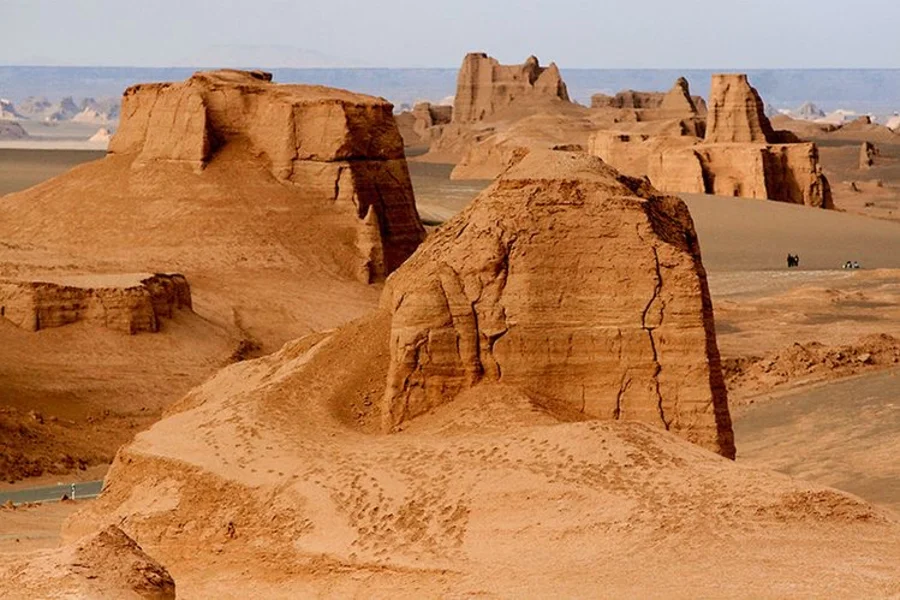
Exploring Kerman’s Natural Beauty
Rageh Canyon
Rageh Canyon, located in Rafsanjan County, is one of the most stunning natural attractions in the area. Carved by the Guivdary River through centuries of erosion and flooding, this 20 km long valley features a series of captivating formations, including narrow and wide passages, and both natural and ancient man-made holes and cuts. The canyon offers easy access, favorable weather, a sand-bed road, a safe environment, and is ideal for astronomy tours. Its proximity to essential resources adds to its appeal.
The Kalouts of Lut Desert
The Lut Desert is a hidden gem in central Iran, known for its captivating natural formations. The Kalouts, often referred to as a “fantasy city,” are sculpted by the wind and rain over centuries, creating striking and ever-changing structures in the desert sands. Each rainfall reshapes the landscape, so every visit to the Kalouts offers a new and unique experience, as the once-familiar formations may appear completely different.

